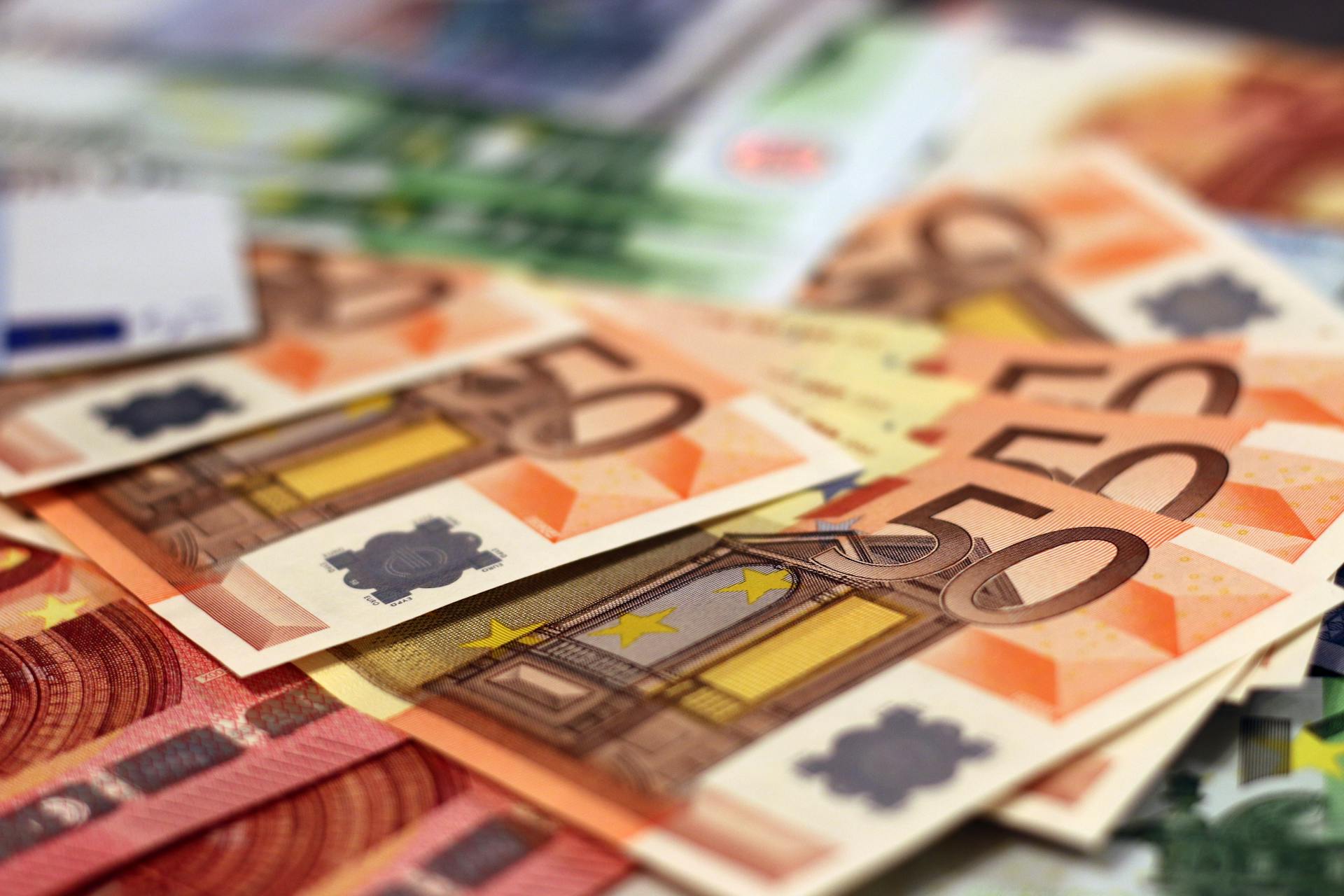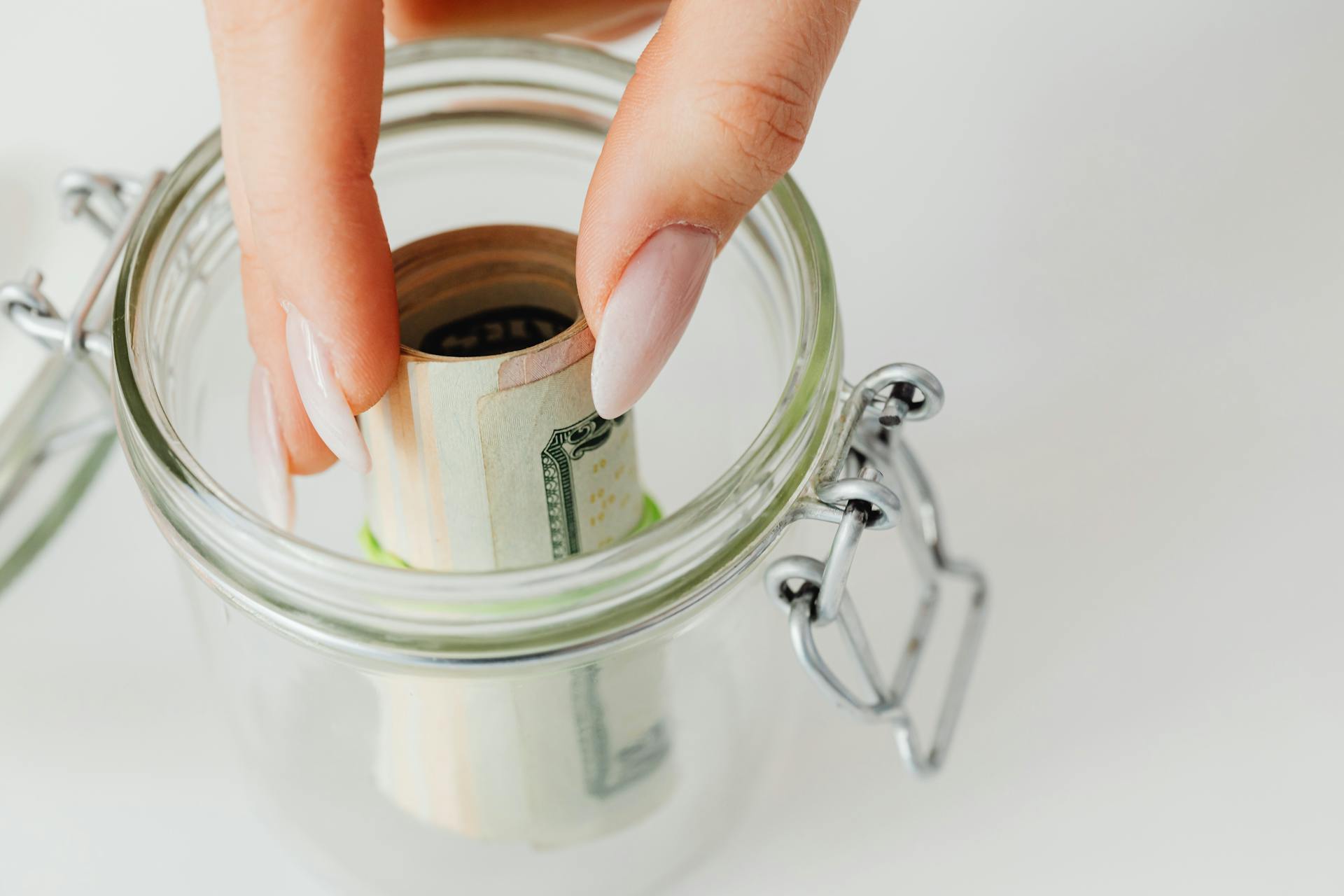
The Czechoslovak Koruna was the official currency of Czechoslovakia from 1919 to 1993. It was introduced as a replacement for the Austro-Hungarian krone.
The koruna was subdivided into 100 haléřů, the smallest unit of currency. This division remained consistent throughout its existence.
In 1993, Czechoslovakia peacefully dissolved into two separate countries, the Czech Republic and Slovakia.
History
The Czechoslovak koruna has a rich history that dates back to 1919. A currency reform took place on April 10 of that year, defining the new koruna as equal in value to the Austro-Hungarian krone.
The first banknotes of the new koruna came into circulation in 1919, with coins following three years later in 1922. This marked the beginning of the koruna's circulation as a distinct currency.
The koruna circulated until 1939, when separate currencies for Bohemia and Moravia and Slovakia were introduced, at par with the Czechoslovak koruna.
Here's an interesting read: Series B Banknotes
100th Anniversary
The 100th anniversary of the Czechoslovak koruna was a significant milestone in the country's history. On March 10, 2019, the Czech National Bank issued a commemorative silver coin to mark this occasion.
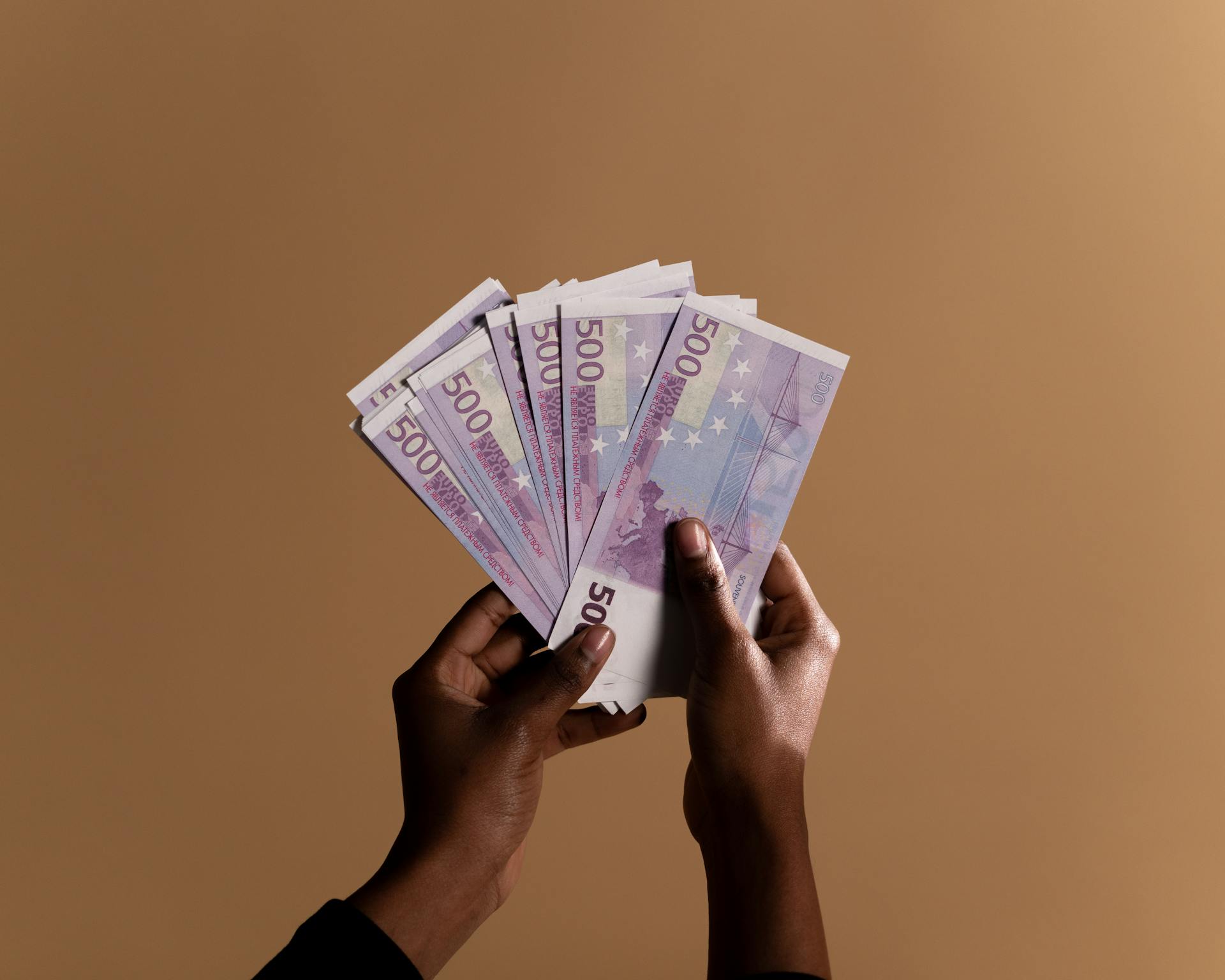
The coin was made from an alloy containing 900 parts silver and 100 parts copper, and its total weight was 34.593 grams. It was also minted with a 986.1 purity gold inlay, which weighed 3.49 grams.
The coin's diameter was 40 mm, excluding the relief inscription, and its thickness was 3.2 mm. The silver body of the coin weighed 31.103 grams.
Each coin came with a blue catalogue card containing a description and the relief of the coin. These cards were a nice touch, adding an extra layer of appreciation for the coin's design and history.
The Czech National Bank sold its commemorative coins through contractual partners licensed to trade in numismatic material.
Discover more: 1899 United States Five-dollar Silver Certificate
First
The first koruna was introduced in Austria-Hungary on 11 September 1892, as the first modern gold-based currency in the area.
This currency was a significant development, marking a shift away from previous monetary systems.
The koruna was introduced as the krone in German, and it was later adopted as the koruna in Czech.

A currency reform took place on 10 April 1919, defining the new koruna as equal in value to the Austro-Hungarian krone.
The first banknotes of the koruna came into circulation in 1919, and the coins were introduced three years later, in 1922.
The koruna circulated until 1939, when separate currencies for Bohemia and Moravia and Slovakia were introduced, at par with the Czechoslovak koruna.
These new currencies were the Bohemian and Moravian koruna and the Slovak koruna.
A fresh viewpoint: Papua New Guinean Kina
Third
The third koruna was introduced in 1972, and a staggering 205,779,354 coins were minted from 1972 to 1990. This koruna featured a coat of arms on the obverse side, surrounded by a linden twig and the year, along with the phrase "ČESKOSLOVENSKÁ SOCIALISTICKÁ REPUBLIKA" (Czechoslovak Socialist Republic).
The koruna went through a number of reforms, with a particularly drastic one undertaken in 1953. The Communist Party of Czechoslovakia declared a currency reform valid from 1 June 1953, and distributed new banknotes printed in the USSR.

A double market existed in the country at the time, with a fixed market ensuring basic food availability and a free market where goods were up to eight times more expensive but of higher quality. The reform was prepared quickly and was confidential until the last minute, but some information leaked anyway, causing panic among people.
The president of Czechoslovakia, Antonín Zápotocký, made a radio speech the night before the deadline, denying any possibility of a reform and quieting down the inhabitants. He knew he was lying to the nation, but it was necessary to maintain calm.
People were allowed to change up to 1,500 old korunas for new korunas at the rate of 5 old to 1 new koruna and the rest at the rate of 50 to 1. All insurance stock, state obligations, and other commercial papers were nullified.
The economic situation of many people got worse, with many petitions and demonstrations breaking out, the largest of which took place in Plzeň, where 472 people were arrested.
Coins
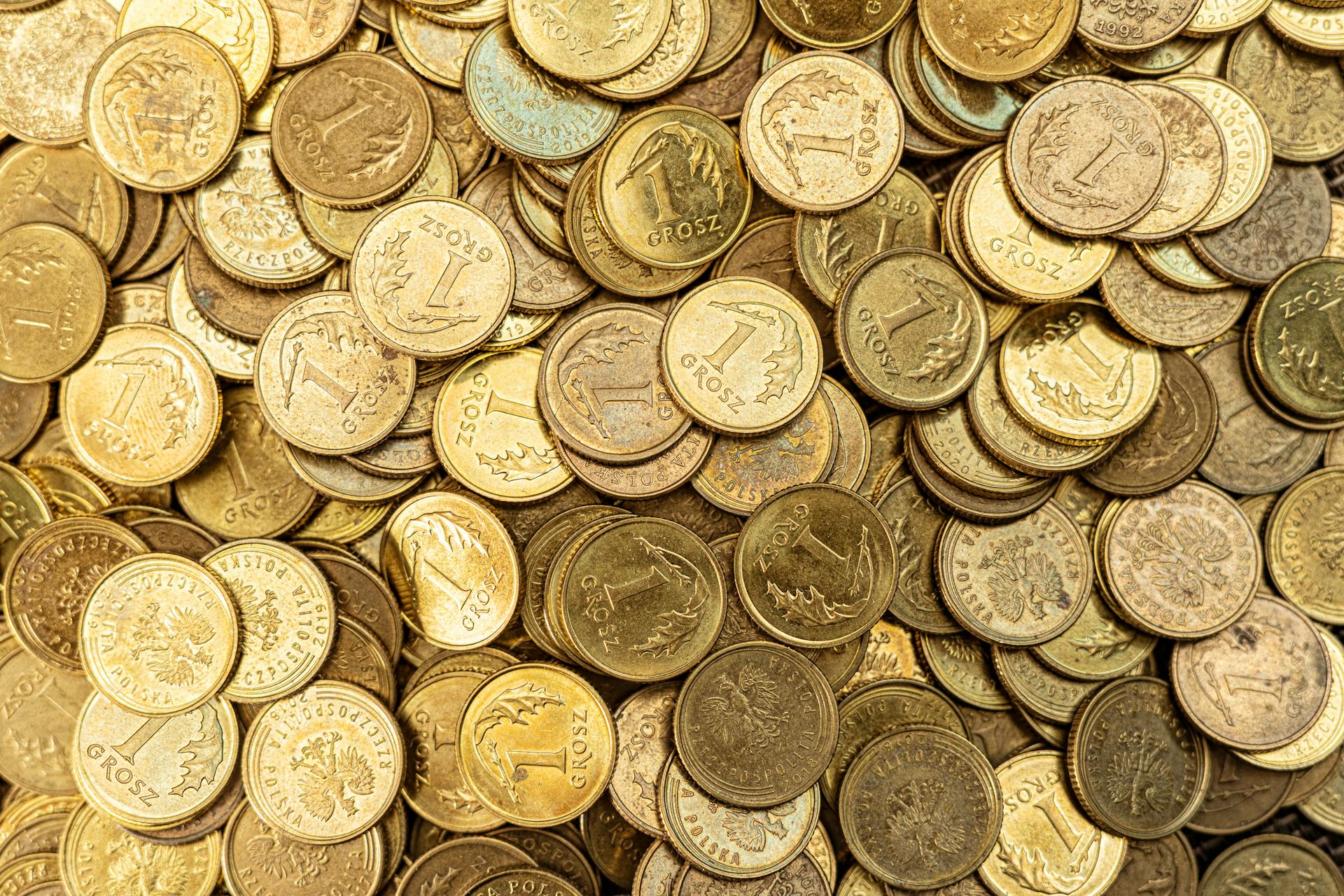
The Czechoslovak koruna had its fair share of coins, with denominations ranging from 1 to 500 korun.
The most common coins were the 1, 2, 5, and 10 korun notes were not the only form of currency, but they were widely used alongside coins.
You might be wondering what the coins looked like - the 1 koruna coin featured a portrait of Klement Gottwald, the first President of Czechoslovakia.
Coins of (1953)
The coins of 1953 were a significant milestone in the world of numismatics. The British Royal Mint produced a large number of coins that year, including the iconic George VI farthing.
One of the most notable coins of 1953 was the George VI farthing, which featured a portrait of King George VI on the obverse. It was a small coin, with a diameter of 19.3mm.
The 1953 coins also marked a significant change in the design of British currency. The George VI farthing was the last coin to feature the monarch's portrait before the introduction of the decimal system.
In 1953, the British Royal Mint produced over 1.3 billion coins, including the George VI farthing, which was a remarkable feat of production.
Take a look at this: Turkish State Mint
Coins of (1945)
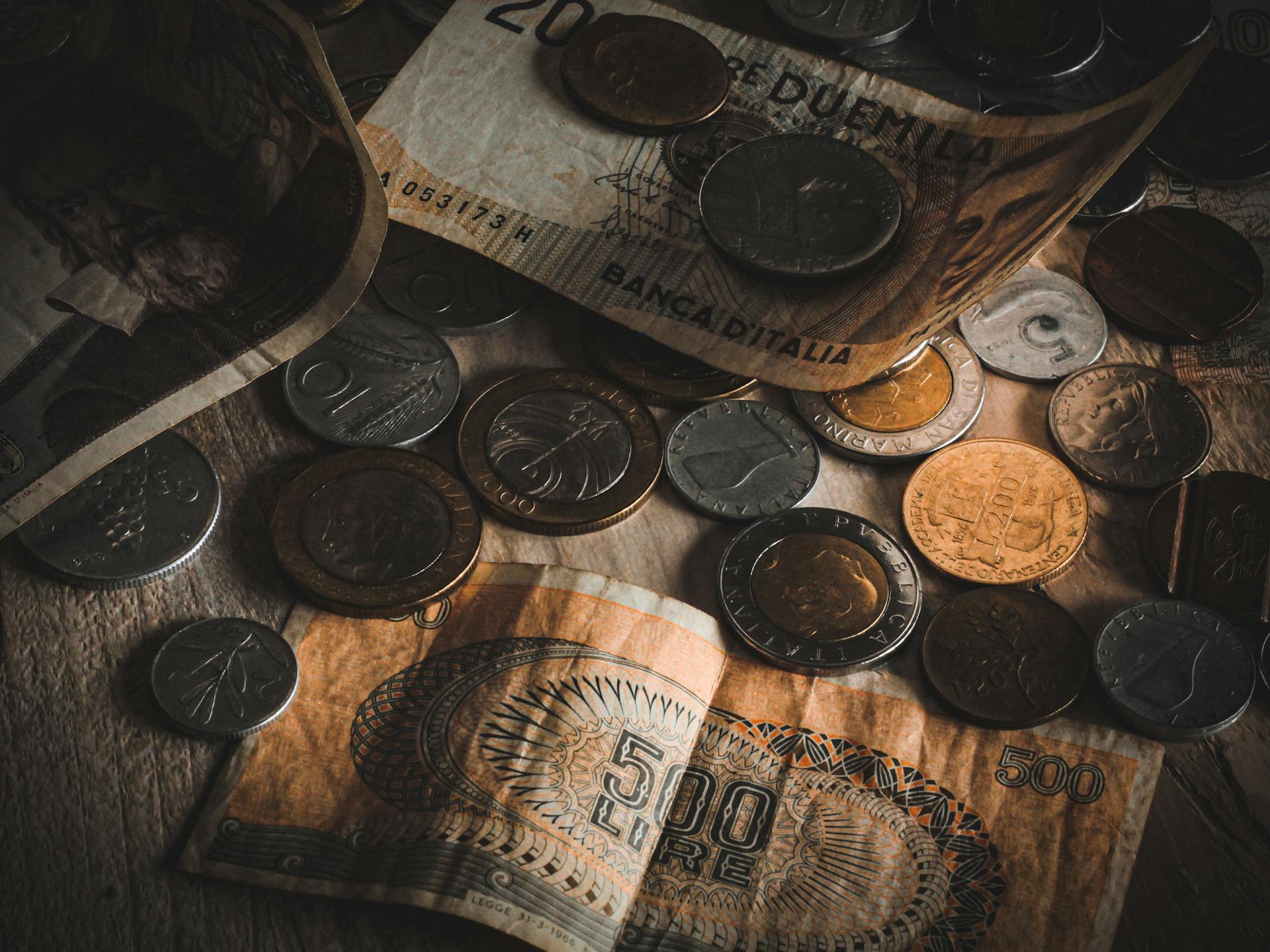
In 1945, coins of the Czechoslovak koruna were minted but not introduced.
These coins would have likely been used in everyday transactions, but they never made it to circulation.
A monetary reform occurred in 1953, which might have changed the course of their introduction.
The coin design featured the phrase "REPUBLIKA ČESKOSLOVENSKÁ", which translates to "Republic, Czechoslovak" in Czech and Slovak languages.
Second
The second koruna was re-established in 1945. This marked a significant change in the country's currency.
It replaced the two previous currencies at par. This means that the value of the new currency was equal to the value of the old currencies.
The currency had lost much of its value as a consequence of the war. This was a major challenge for the country to overcome.
On a similar theme: Uncirculated 1943 Steel Penny Value
Banknotes
The banknotes of the Czechoslovak koruna were first issued in 1953 by the Communist Party of Czechoslovakia. They came in denominations of 1, 3, and 5 korun.
You can find a comprehensive catalog of Czechoslovak banknotes online, which includes a gallery and other details.
The first banknotes of the third Czechoslovak koruna were issued in a specific set of denominations, which is still worth noting today.
Additional reading: Costa Rican Colon Denominations
Countries
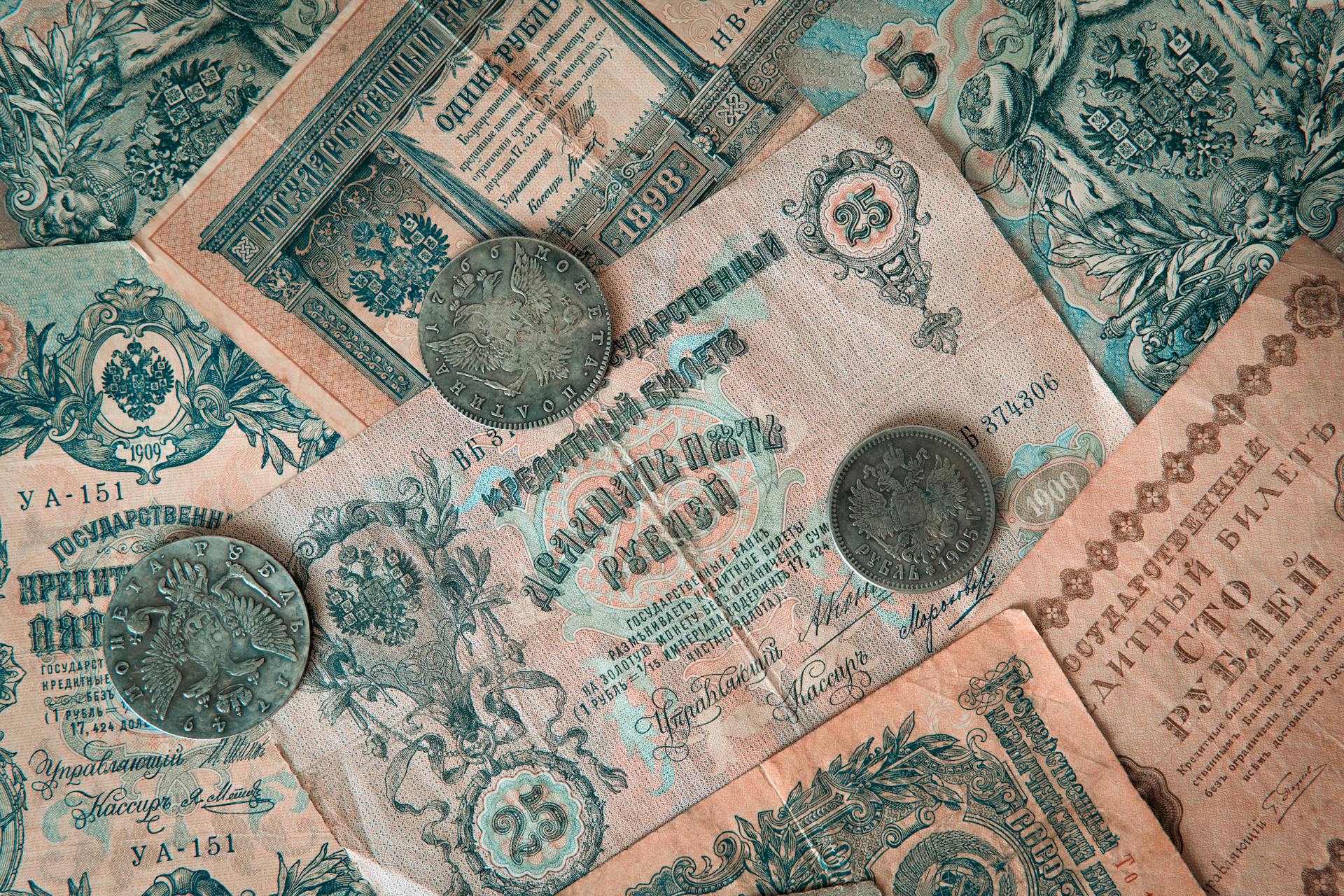
The Czechoslovak koruna was the official currency of Czechoslovakia from 1919 to 1993.
It was used in Czechoslovakia, a country that existed from 1918 to 1993, before it split into the Czech Republic and Slovakia.
The Czechoslovak koruna was also used in the country's territories, including Bohemia, Moravia, and Slovakia.
You might like: Where Are Dinars Used
Czech
The Czechs have a rich history, and one of the most interesting aspects is their currency. The Czechoslovak koruna was the official currency of Czechoslovakia, and it's still remembered today.
In Czech, the word for crown is "koruna", which is also the name of their former currency. This is a fascinating example of how language and history are intertwined.
The Czechoslovak koruna was used from 1919 to 1993, and it's still studied by economists and historians today.
Slovak
The Slovak koruna was used from 1939 to 1945. It replaced the Czechoslovak koruna at par and was replaced by the reconstituted Czechoslovak koruna, again at par.
Initially, the Slovak koruna was introduced.
Readers also liked: Currency Replaced by Euros in Latvia
Frequently Asked Questions
What is Czech koruna?
The Czech koruna is the official currency of the Czech Republic, also known as the Czech crown, with the code CZK and symbol Kč. It's a widely accepted currency in the country, used for everyday transactions.
Sources
- https://en.wikipedia.org/wiki/Czechoslovak_koruna
- https://www.cnb.cz/en/banknotes-and-coins/numismatics/commemorative-bi-metal-coins/100th-anniversary-of-the-introduction-of-th-Czechoslovak-koruna/
- https://www.wikiwand.com/en/articles/Coins_of_the_Czechoslovak_koruna_(1953)
- https://www.srku.edu.in/read
- https://en-academic.com/dic.nsf/enwiki/1216840
Featured Images: pexels.com
